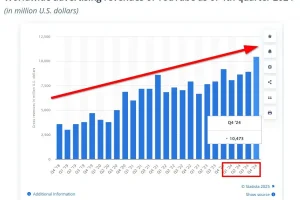NFTs are growing more and more popular. While still in its infancy, this technology holds great promise to transform multiple industries.
NFTs use blockchain to verify transference, making them unique among digital representations; some, like those representing Bored Ape Yacht Club or Beeple’s works have even reached record sales prices.
What is an NFT?
NFTs (Networked Financial Tokens) are digital tokens representing unique works of digital creation such as art, games or music that can be purchased and traded online. Most notably they’re often encoded onto blockchain networks like Ethereum so they can be traded and tracked easily.
As mentioned above, tokens can also be used to democratize investing in physical assets by enabling multiple people to purchase and own parts of an object, rather than the entire piece; this process is known as tokenization.
NFTs should be stored in a digital wallet that supports cryptocurrency, available through exchanges or proprietary marketplaces like NBA Top Shot and Bored Ape Yacht Club. You should utilize comprehensive internet security software to protect both NFTs and cryptocurrency from hackers; cold wallets offer additional protection; just remember that NFTs are highly speculative investments worth buying only if their value will appreciate over time.
How do NFTs work?
NFTs (netflix tokens) allow buyers and sellers to acquire digital creations that hold real value, much like physical collector’s items. But unlike JPEGs which can be copied infinitely, NFTs allow owners to clearly mark an item as original and verify ownership using blockchain technology.
These digital tokens are typically one-of-a-kind or limited production runs, creating the impression of scarcity that drives interest in their market. Decentralization also adds another factor of intrigue for buyers.
As with any speculative market, it’s essential that you recognize that NFTs should not be seen as producing regular cash flow or increasing in value over time. That being said, there have been notable money moves with these assets in recent times; someone buying an artwork or sports clip to turn a quick profit being one example – and others may take an early position for long-term gain.
How do NFTs impact the art world?
NFTs are changing the art world in multiple ways. One major way is that they make it easier for artists to sell their works directly to collectors without going through galleries or auction houses, which can help smaller or emerging artists reduce selling costs and cost of selling their works.
NFTs also help increase transparency in the art world by recording permanent records of ownership on blockchains, helping prevent forgeries and verify its authenticity. NFTs may even help create novel forms of art like interactive pieces and virtual reality artworks.
Many established contemporary artists have also begun using NFTs as a means of creating and selling their work, with Damien Hirst most recently using this method with The Currency series that correspond to unique spot paintings. By selling these NFTs, Hirst created secondary market for his art while earning royalties whenever one of these pieces sold.
How do NFTs impact the finance world?
NFTs have also provided digital artists and content creators with new opportunities to monetize their work. Instead of depending on traditional art dealers or auction houses for sales of artwork, these creators can sell it through NFTs instead and keep more of the profits themselves.
NFT technology has provided a more secure means of verifying ownership and authenticating digital assets, with its scarcity-driven aspect making them more collectable and valuable than other forms.
NFTs can be used to represent anything, such as music and video clips. A collector could purchase, for instance, an NBA Top Shot NFT market clip of LeBron James dunking for $208,000 as an NFT; even though this clip can still be watched online freely for free viewing, purchasing it as an NFT provides proof of ownership and guarantees of scarcity that gives this piece similar value to traditional pieces of art that go through lengthy auction processes. Furthermore, traditional art must often wait several months before going up for sale again.








